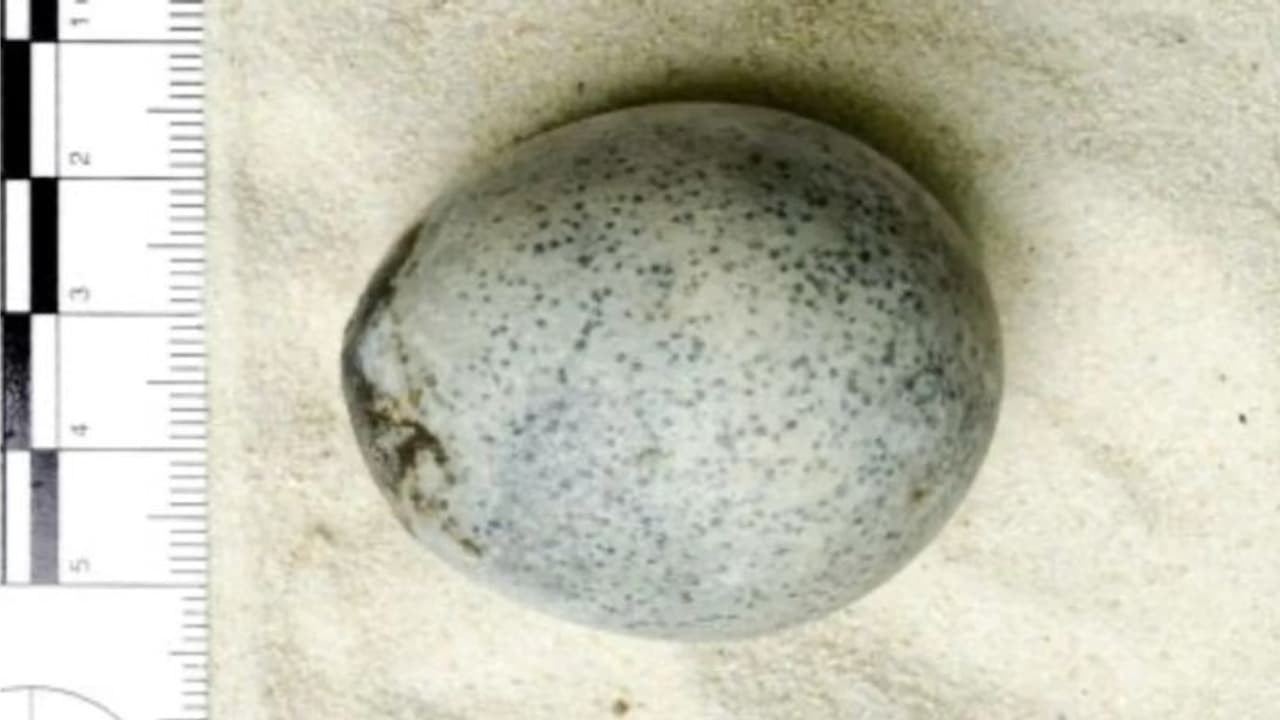This remarkable discovery, believed to be the only intact egg of its kind globally from the Roman occupation of Great Britain, has captured the fascination of scientists and historians alike.
In a groundbreaking archaeological revelation, researchers have unearthed a pristine chicken egg estimated to be approximately 1,700 years old in Berryfields near Aylesbury, Buckinghamshire. This remarkable discovery, believed to be the only intact egg of its kind globally from the Roman occupation of Great Britain, has captured the fascination of scientists and historians alike.

Discovered during an extensive excavation spanning from 2007 to 2016, before the onset of house construction, the egg was found nestled within a waterlogged pit alongside other relics, including a wooden basket. The pit's unique conditions prevented organic materials from succumbing to decay, preserving the egg's structural integrity and its inner contents, a phenomenon rarely witnessed in archaeological finds of this nature.
Micro CT scans conducted by experts have revealed detailed 3D images of the egg, showcasing not only its intact shell but also the presence of liquid contents within, comprising the yolk and albumen. Edward Biddulph, the senior project manager at Oxford Archaeology, expressed astonishment at the sight, emphasizing the rarity and significance of the find.
Of the four eggs recovered from the site, only one remained unscathed, while the others shattered upon discovery, emitting a pungent odor characteristic of aged organic matter. This singular intact egg has since become a focal point of scientific inquiry, drawing attention from researchers worldwide.
Conservator Dana Goodburn-Brown led further scans at the University of Kent, unveiling remarkable images that underscored the egg's pristine condition and the retention of its liquid contents. Transported to London's Natural History Museum for preservation and analysis, the egg presents a unique opportunity to delve into ancient avian biology and shed light on the domestication of chickens during the Roman era.
While the museum houses a collection of mummified bird eggs sourced from the catacombs of sacred animals in Denderah, Upper Egypt, the intact Roman-era egg stands as a testament to the resilience of archaeological artifacts and the mysteries they hold.
Efforts are currently underway at the Discover Bucks Museum in Aylesbury to devise a method for safely extracting the egg's contents without compromising its delicate shell. Edward Biddulph emphasized the immense potential for further scientific exploration, heralding the next chapter in unraveling the secrets encapsulated within this extraordinary relic of antiquity.
As researchers embark on a journey of discovery, armed with cutting-edge imaging technologies and analytical tools, the Roman-era egg promises to unveil new insights into ancient civilizations, offering a glimpse into the daily lives and cultural practices of our distant ancestors. With each revelation, the egg stands as a testament to the enduring allure of history and the boundless wonders of the archaeological realm.
